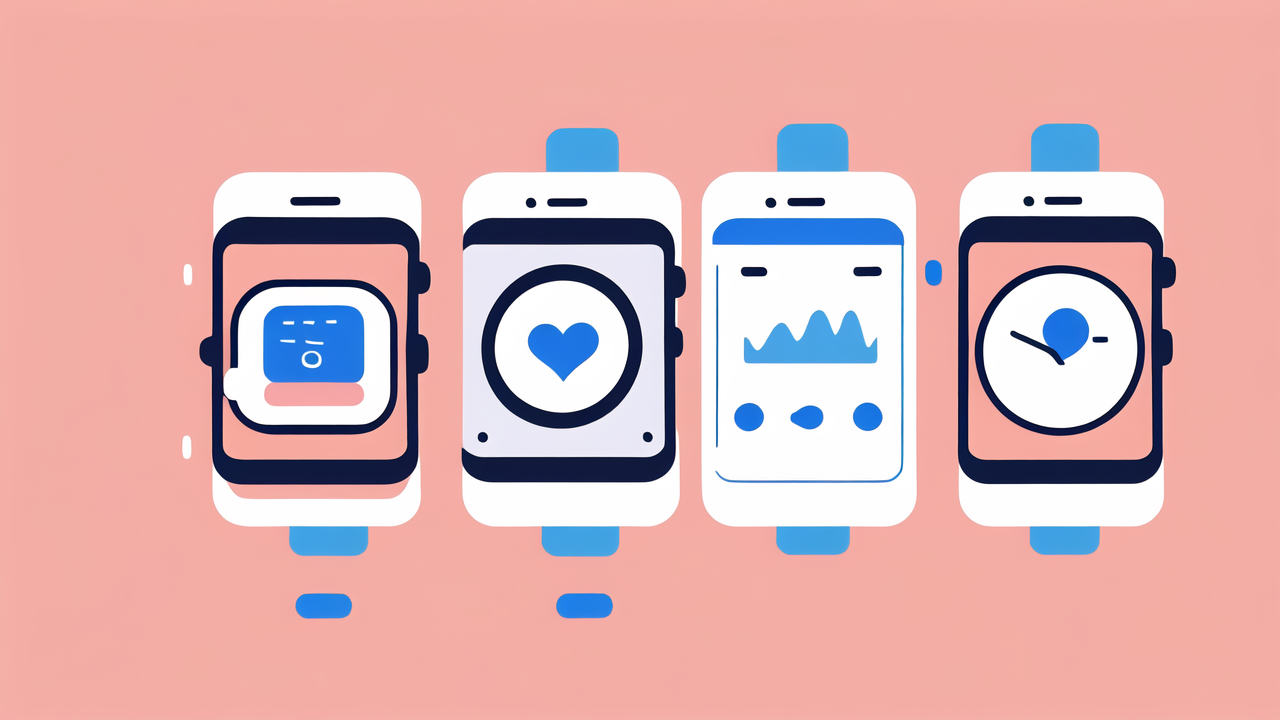Understanding the Differences: Smart Band vs. Smartwatch
The Evolution of Wearable Technology
Wearable tech has come a long way. It started with simple pedometers. Now, we have advanced smart bands and watches. These devices can track our health, fitness, and daily activities. They've become more than just gadgets. They're now essential tools for many people. The journey from basic step counters to today's smart devices is amazing. It shows how fast technology can change our lives.

Key Features of Smart Bands and Smartwatches
Smart bands and smartwatches have unique features. Smart bands focus on fitness tracking. They're simpler and often cheaper. Smartwatches offer more functions. They're like mini-computers on your wrist. Here are some key differences:
- Smart bands:
- Lightweight and comfortable
- Long battery life
- Focused on health and fitness tracking
- Usually more affordable
- Smartwatches:
- Larger displays
- More apps and features
- Can often make calls and send messages
- Generally more expensive
The Impact of Battery Life on Wearable Devices
Battery life is crucial for wearable tech. It affects how often you need to charge your device. Smart bands often win in this area. They can last for days or even weeks on a single charge. Smartwatches, with their larger screens and more features, tend to need charging more often. This can be daily for some models. Better battery life means less hassle for users. It's a big factor when people choose between smart bands and watches.
Expert Insights: Why Smart Bands are Winning in the US Market
Consumer Behavior and Preferences in the Wearable Tech Industry
Experts say smart bands are gaining popularity in the US. This is due to changing consumer needs. People want simple, focused devices. Smart bands offer this. They're easy to use and don't overwhelm with features. Many users prefer them for daily wear. They're less intrusive than smartwatches. Price is also a factor. Smart bands are often more affordable. This makes them accessible to a wider range of consumers.

The Role of Smart Bands in Health and Fitness
Smart bands excel in health and fitness tracking. They're designed for this purpose. Many people use them to:
- Monitor heart rate
- Track sleep patterns
- Count steps and calories burned
- Set and achieve fitness goals
These features make smart bands popular among health-conscious consumers. They provide valuable data without being too complex. For many, this focus on health is more important than extra smartwatch features. Smart bands help people stay motivated and track their progress easily.
Innovations in Smart Band Technology: Bluetooth, NFC, and Beyond
Smart bands are getting smarter. New tech is making them more useful. Bluetooth allows easy connections to phones. This means quick data syncing and updates. NFC (Near Field Communication) is another exciting feature. It lets smart bands act as payment devices. You can tap to pay at stores. Some bands now have GPS too. This is great for runners and cyclists. These innovations are making smart bands more versatile. They're becoming powerful tools for everyday life.
The Future of Wearable Technology: Predictions and Trends
Integration of AI and Machine Learning in Smart Bands
AI and machine learning are changing smart bands. These technologies make devices smarter. They can learn from your habits. This leads to better health insights. For example, a smart band might:

- Predict stress levels based on heart rate patterns
- Suggest workouts based on your fitness level
- Alert you to potential health issues before they become serious
AI can also help improve sleep tracking. It can give personalized advice for better rest. As AI gets better, smart bands will become even more helpful. They'll be like having a personal health assistant on your wrist.
The Growing Importance of Wearable Tech in the Workplace
Wearable tech is finding its place in the workplace. Smart bands are useful for many jobs. They can:
- Track employee health and safety
- Monitor productivity
- Improve communication in teams
Some companies use smart bands to promote wellness programs. They encourage employees to stay active. This can lead to healthier, happier workers. In some industries, smart bands help with safety. They can detect falls or dangerous conditions. As more businesses see the benefits, smart bands at work will become common.
Upcoming Developments in the Wearable Technology Space
The future of wearable tech is exciting. We can expect to see:
- Longer battery life through better power management
- More advanced health sensors for detailed body monitoring
- Flexible displays that wrap around the wrist
- Integration with smart home devices and virtual assistants
- Improved data security and privacy features
Smart bands may start to include features we now associate with smartwatches. But they'll likely keep their focus on simplicity and health. The line between smart bands and watches might blur. What's clear is that wearable tech will continue to evolve and improve our lives in new ways.




Leave a comment
This site is protected by hCaptcha and the hCaptcha Privacy Policy and Terms of Service apply.